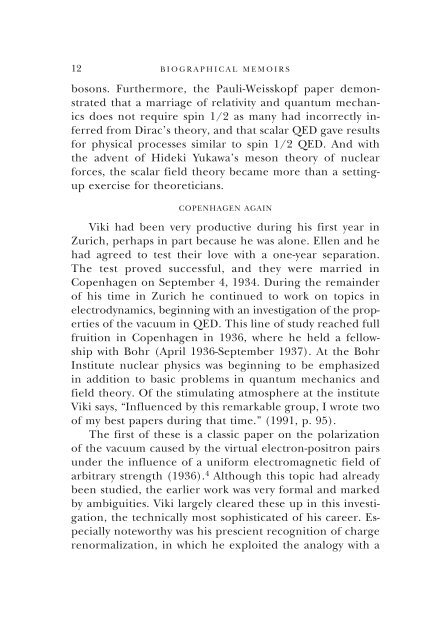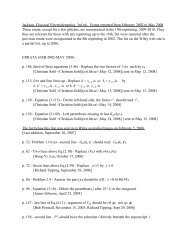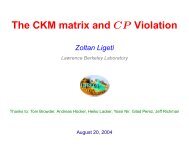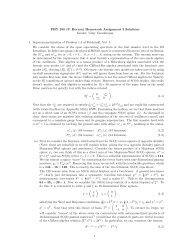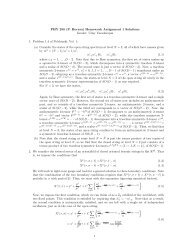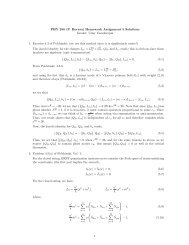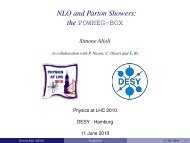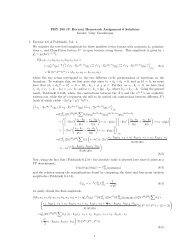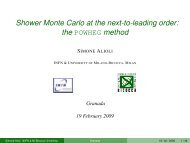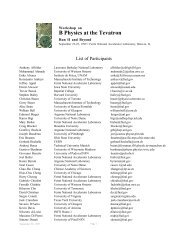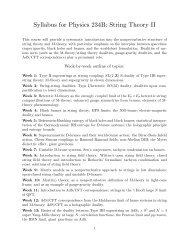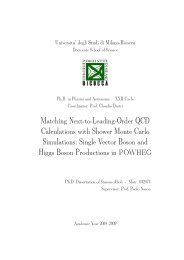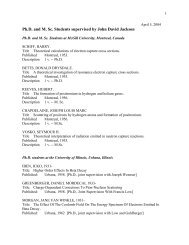Victor Frederick Weisskopf, 1908-2002 - Theoretical Physics at LBNL
Victor Frederick Weisskopf, 1908-2002 - Theoretical Physics at LBNL
Victor Frederick Weisskopf, 1908-2002 - Theoretical Physics at LBNL
You also want an ePaper? Increase the reach of your titles
YUMPU automatically turns print PDFs into web optimized ePapers that Google loves.
12 BIOGRAPHICAL MEMOIRSbosons. Furthermore, the Pauli-<strong>Weisskopf</strong> paper demonstr<strong>at</strong>edth<strong>at</strong> a marriage of rel<strong>at</strong>ivity and quantum mechanicsdoes not require spin 1/2 as many had incorrectly inferredfrom Dirac’s theory, and th<strong>at</strong> scalar QED gave resultsfor physical processes similar to spin 1/2 QED. And withthe advent of Hideki Yukawa’s meson theory of nuclearforces, the scalar field theory became more than a settingupexercise for theoreticians.COPENHAGEN AGAINViki had been very productive during his first year inZurich, perhaps in part because he was alone. Ellen and hehad agreed to test their love with a one-year separ<strong>at</strong>ion.The test proved successful, and they were married inCopenhagen on September 4, 1934. During the remainderof his time in Zurich he continued to work on topics inelectrodynamics, beginning with an investig<strong>at</strong>ion of the propertiesof the vacuum in QED. This line of study reached fullfruition in Copenhagen in 1936, where he held a fellowshipwith Bohr (April 1936-September 1937). At the BohrInstitute nuclear physics was beginning to be emphasizedin addition to basic problems in quantum mechanics andfield theory. Of the stimul<strong>at</strong>ing <strong>at</strong>mosphere <strong>at</strong> the instituteViki says, “Influenced by this remarkable group, I wrote twoof my best papers during th<strong>at</strong> time.” (1991, p. 95).The first of these is a classic paper on the polariz<strong>at</strong>ionof the vacuum caused by the virtual electron-positron pairsunder the influence of a uniform electromagnetic field ofarbitrary strength (1936). 4 Although this topic had alreadybeen studied, the earlier work was very formal and markedby ambiguities. Viki largely cleared these up in this investig<strong>at</strong>ion,the technically most sophistic<strong>at</strong>ed of his career. Especiallynoteworthy was his prescient recognition of chargerenormaliz<strong>at</strong>ion, in which he exploited the analogy with a


